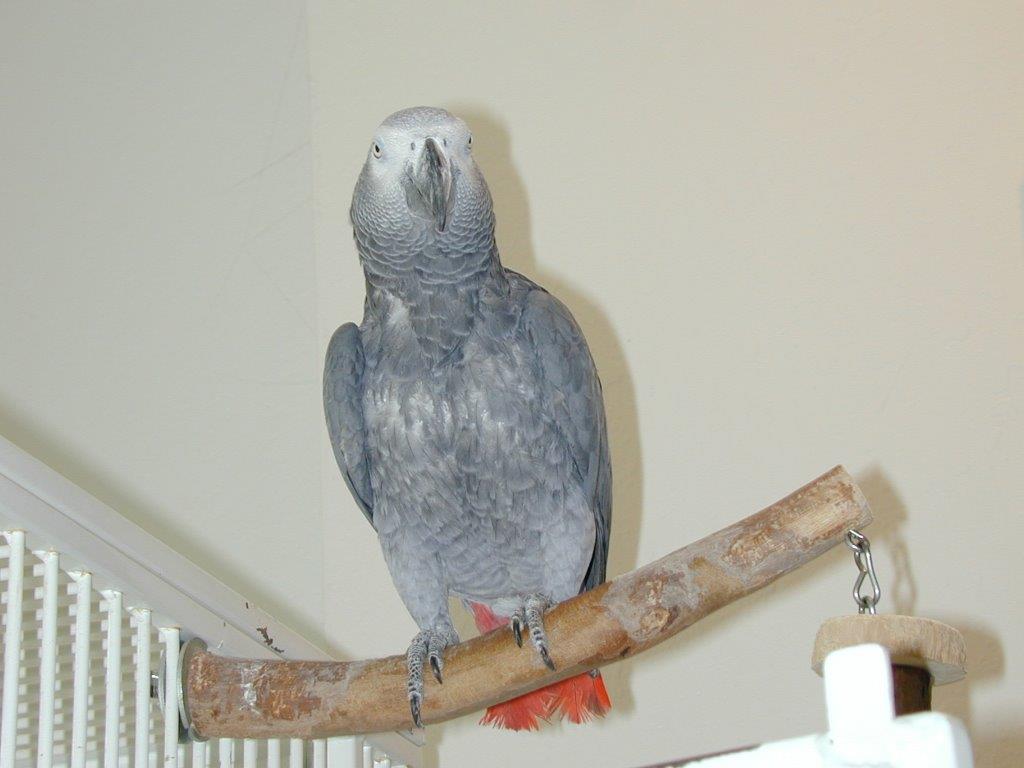SWITCHING YOUR BIRD TO PELLETS
|
||||
|
This is the method which I use to switch birds from seeds to pellets: Give the bird the usual ration of seeds and soft foods in the morning; remove the soft foods and seeds in the early afternoon. The primary pellet and very small quantities of several of the samples mixed together should be available in the cage at all times. If the bird hasn't eaten any of the pellets by evening, give him another bowl of soft foods. If the bird isn't eating soft foods, two portions of seeds will have to be offered daily until he is eating the pellets and/or the soft foods. Some birds will starve themselves rather than eat pellets or soft foods instead of seeds. If he is eating soft foods, the transition will be much easier because he can be offered soft foods twice daily and you can be assured he is getting sufficient healthy nourishment. Healthy soft foods such as a birdie bread, a beans/grains mix, sprouts, cooked sweet potatoes, cooked winter squash, fresh fruits and veggies high in Vitamin A should be offered during this transition - and as a permanent part of the diet. I don't recommend a 100% pellet diet. Germinated seeds or sprouts are a good transition food as they resemble the dry seeds enough that the bird will usually eat them readily. Requesting samples from the pellet manufacturers can provide a varied supply of pellets for the bowl. The bird may prefer one pellet over another. Even if he chooses only one, continue to add a very small amount of the other samples. It is important for the bird to see a variety of shapes, colors and sizes in his bowl. It can sometimes take months or even years to make the switch. Be patient and continue to offer the pellets. Eventually the bird will nibble on them - from curiosity or hunger while waiting for his next portion of seeds or soft foods. A cold turkey switch is not recommended. This is much too stressful and can cause behavior problems in companion birds brought on by hunger, anxiety, frustration and deprivation. The brand of pellet the bird chooses at this point isn't especially important. There are questions in the minds of some bird keepers whether artificial preservatives and dyes are healthy for birds. Seeds are such a nutritionally deficient diet that almost any pellet is better. With patience and persistence, the bird can be gradually switched over to a "healthier" pellet -one containing no preservative or dyes. While most preservatives and dyes in most pellets are human quality, even some humans are sensitive to them. One supposes, this may be true for birds too. Weigh your companion bird daily during the switch from seeds to pellets. Watch the feces carefully. It should not be scanty or black. Check the waste tray to see if there are pellet crumbs or the eaten remains of any of the soft foods. Check the water bowl to see if there are pellet crumbs. Choose a base pellet for the initial conversion which doesn't contain chemical preservatives or artificial coloring such as Harrison's Bird Diet, Ziegler's or Hagen's Tropican. Very small quantities of other pellets, perhaps a teaspoon, can be added. Call the pellet manufacturers and ask for samples. Use these samples as a very small portion of the pellets that are offered. The 800 numbers for some of the food manufacturers are listed below.
A beans and grains recipe in Grains: Delicious And Healthy Too at http://www.birdsnways.com/wisdom/ww3eiii.htm There is a sprouting article Sprouts: Nutritious And Easy To Grow at http://www.birdsnways.com/wisdom/ww2e.htm China Prairie sells a quality sprouting mix: http://www.chinaprairie.com/ A combination of organically grown seeds, beans and peas for sprouting can be purchased at health food stores. Avoid kidney, lima or soy beans for sprouting as they contain an enzyme that must be deactivated by cooking. Another food that is well liked is Crazy Corn Rain Forest Rice Puddin - their number is 1-800-BIRDYUM You can also try my Birdie Bread (Bobbi's Birdie Bread) and other soft food recipes found at the Recipe Xchange http://www.birdsnways.com/birds/recipes.htm All rights reserved. No part of this article may be reproduced in any form or by any means, without permission from the author. |
